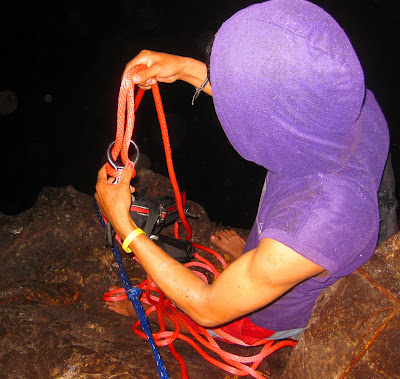 Kuya Ronelo (Nic) Hidalgo
Kuya Ronelo (Nic) Hidalgo

Kuya Nic, as I like to call the leader of the group, is a head english teacher at the local high school, with lots of charisma and passion for teaching others about protecting important ecological niches like Kan Apoy. The club is in need of harnesses and ropes, along with financial assistance for transportation for ongoing trekking events in the area to keep the learning process alive, if anyone is willing to give. Thus far, I've been able to get tents from James Madison University and some name recognition for the club, and we've given a rope to the club, but they need good helmets, harnesses, sleeping mats, and other stuff for outdoor trekking. Although great for the members of the club, trekking clubs are also crucial for preservation of the environment of the Philippines and local treasures like cave Kan Apoy. The more foreigners and visitors show an interest in visiting places like this, the less likely it is that they will be exploited for their raw natural resources. If you're wondering if this is a plug for support, it is, but it's a well-deserved plug.
 Rappelling like a Champ, PCV Kelly
Rappelling like a Champ, PCV Kelly On the job training: The Filipinos who were along with us were eager to learn about rigging for rappelling. We all shared my one harness, carabiner and figure 8. It took a while, but was a safe descent.
On the job training: The Filipinos who were along with us were eager to learn about rigging for rappelling. We all shared my one harness, carabiner and figure 8. It took a while, but was a safe descent.




2 comments:
Great blog!!!!!!
Enjoyed reading & miss you guys..But you can keep the bats!
Post a Comment